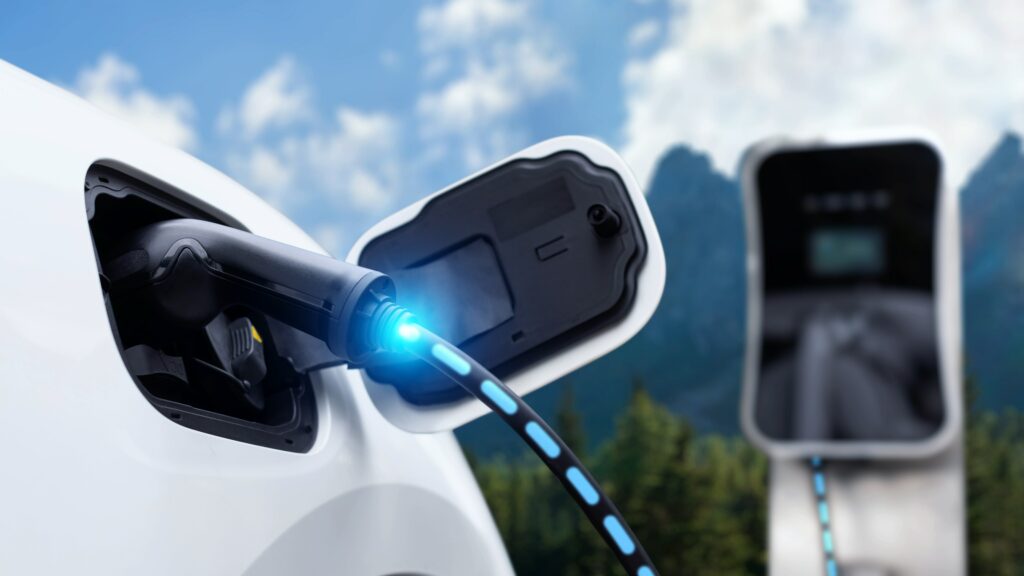02 July 2025

The number of public electric vehicle (EV) charging points continues to grow, but which region and technology leads the way? Using the latest data from EV Volumes, Autovista24 editor Tom Geggus assesses the situation.
Charging infrastructure continues to grow across the world as EV adoption drives demand. But what is the best way to measure the volume of plug-in points currently available to the public?
Across 75 markets, EV Volumes tracks the number of locations where a certain connector type can be found. This surpasses a simple tally of station numbers, instead accounting for charger variety.
A station with two combined charging system (CCS) points counts as one location. Meanwhile, a charger offering one CCS and one CHAdeMO connection counts as two locations.
According to this classification, 3.85 million EV charging points were tallied by May 2025. This equated to an increase of 34.8% compared with the same point last year. However, this is slower than the 42.6% growth in May 2024 and far below the 81.8% recorded 12 months before that. There was an increase of 34.7% at the same point in 2022, but this was down from the 53.2% jump in May 2021.
Speedier charging?
While the rollout of public EV infrastructure might have slowed, not all technologies have developed at the same rate. Dividing charging speeds into three categories reveals some emerging trends.
The normal speed category includes type 1, 2 and 3 points, Tesla high-power wall connectors, and Chinese GB/T AC chargers. The power output in this category extends up to 24kW.
This grouping saw year-on-year growth of 71.8% in May 2023 and 58.3% in the same month last year. By May 2025, nearly 2.15 million normal-speed charging points were recorded across the 75 observed markets. This meant slower year-on-year growth of 23.4%.
The fast-charging category has followed a similar path. This grouping is made up of 22-60kW GB/T DC Chinese connectors as well as 50-350kW CHAdeMO and CCS plugs. By May this year, 1.69 million fast-charging points were tallied, up by 53% compared with the same point 12 months ago. This followed growth of 45.4% in May 2024 and 101.1% a year prior.
The ultra-fast category covers 250kW Tesla Superchargers and 350kW CCS plugs. The number of these points increased by 11.8% to 9,371 by May 2025. This grouping saw year-on-year growth of 27.1% by the same point in 2024 and 47.7% in May 2023.
Fast charging accelerates
While the ultrafast category has grown more slowly, EVs capable of charging at this speed remain in the minority. Additionally, these are often more premium models, outside of the mass market.
Conversely, the list of EVs capable of accessing fast charging infrastructure is far more expansive. Carmakers want to address concerns of longer plug-in times, introducing speedier charging capabilities more broadly as the technology advances.
This helps account for the fast-charging category seeing nearly double the growth of the normal grouping in May 2025. The technology also made up 44% of recorded public charging infrastructure, up by 5.3 percentage points (pp) from May 2024.
Most of this gain was at the expense of the normal speed grouping, which saw its share fall to 55.8%. At the same point last year, the technology made up 61% of all recorded plug-in points. This development follows the technological progression of EVs as they achieve faster charging speeds.
Meanwhile, the ultra-fast category shrank marginally by 0.1pp to 0.2%. This is likely due to the technology’s greater exclusivity, higher costs and greater demands on the grid. But have these charging speed trends been consistent across all regions?
Europe’s charging infrastructure
Across Europe, including the EU, EFTA and the UK, EV Volumes counted 442,804 public charging points. This equated to an increase of 14.4% compared with May 2024.
The region’s rate of growth does appear to have slowed since May 2023, when the tally jumped by 42.3% year on year. This was followed by a 29.1% increase at the same point in 2024.
With a 74.7% share, the majority of infrastructure in the region belonged in the normal speed category. However, the rate at which this category is expanding slowed to 11.7% year on year. This followed growth of 27.9% in May 2024 and 39% in the same month in 2023.
Both the fast and ultra-fast infrastructure groupings were subject to this trend as well. The fast category saw growth slow from 55% in May 2023 to 33.1% 12 months later, then 23.1% this year. This meant the technology took a 24.7% share, while ultra-fast remained stable at 0.6% over the last three years.
The Netherlands boosts numbers
While Europe has seen an increasing amount of public charging infrastructure installed, the spread was far from even. The Netherlands led the way, with 117,413 points recorded by May 2025.
This is not surprising given the country’s booming EV market. In the first five months of the year, the country recorded 80,373 new EV registrations, according to data from ACEA. This meant plug-in powertrains made up 54.1% of all new-car deliveries in the Netherlands from January to May.
Germany had the second-largest number of EV charging points, reaching a tally of 54,681. However, at 15,421 points, Germany had three times the number of fast chargers as the Netherlands at 4,429. In third, the UK reached 50,481 public chargers in total, with 18,587 fast points making up approximately a third of its overall offering.
At the other end of the spectrum, Malta had 75 normal speed chargers available. However, its smaller EV market has already experienced a drop in the first five months of the year. 835 plug-in vehicles were registered, down by 34.9%.
The EU is expected to see public EV charging infrastructure grow thanks to the Alternative Fuels Infrastructure Regulation. This year, charging stations outputting between 22kW and 150kW must be set up every 60km along the TEN-T road network.
There are also local requirements. In Germany, the Masterplan Ladeinfrastruktur, sets out a strategy to reach 1 million public charging points by 2030. Elsewhere, France aims to roll out 400,000 public charging points by 2030.
Way out in front
So, how does Europe compare with other major EV markets? According to EV Volumes, China’s new plug-in vehicle market grew by 42.2% year on year between January and May. This equated to the sale of 4.76 million units, the largest amount globally.
Accordingly, the number of public charging infrastructure far exceeded any other market. By May this year, just under 3.13 million points were available, up by 40.2% year on year. The normal category took a 51.6% share of this total, while 48.3% were fast. Ultra-fast, on the other hand, made up only 0.1% of public charging infrastructure.
As noted by the International Energy Agency’s (IEA’s) Global EV Outlook, there are important regional differences worthy of note. EV drivers in China’s densely populated urban areas rely on public infrastructure. Meanwhile, Europe has a far greater number of private chargers at home.
Uncertainty in the US
Compared with the relatively consistent expansion of charging points in China, the US has seen varied growth. The country recorded 81,693 connectors by May this year, marking a growth of 13.5%.
Normal speed chargers made up the majority of points, accounting for 77.7%, followed by fast points at 17.8%. However, where the US stood out was the far larger number of ultra-fast chargers, which made up 4.5% of plug-in points.
The National Electric Vehicle Infrastructure (NEVI) programme put aside $5 billion (€4.2 billion) to fund fast charging along corridors. However, the IEA highlights that by the end of last year, only $30 million had been spent on points which are now in operation.
Furthermore, these funds were frozen in January 2025 so the new administration could carry out a review. This put the further rollout of public EV charging infrastructure in the US into a far more precarious position.
With so many different approaches across the world, the rollout of public EV charging infrastructure will continue to be uneven.



